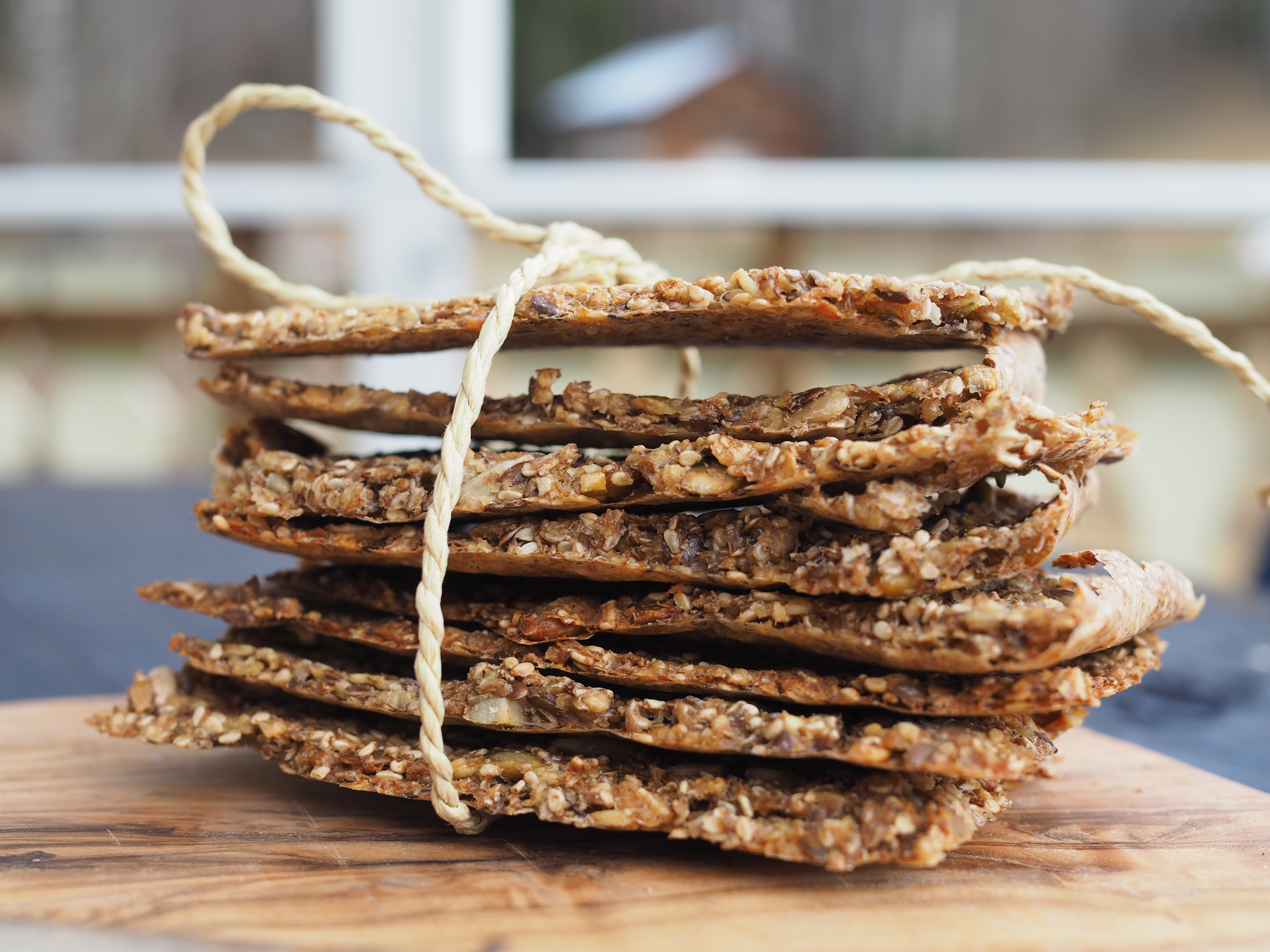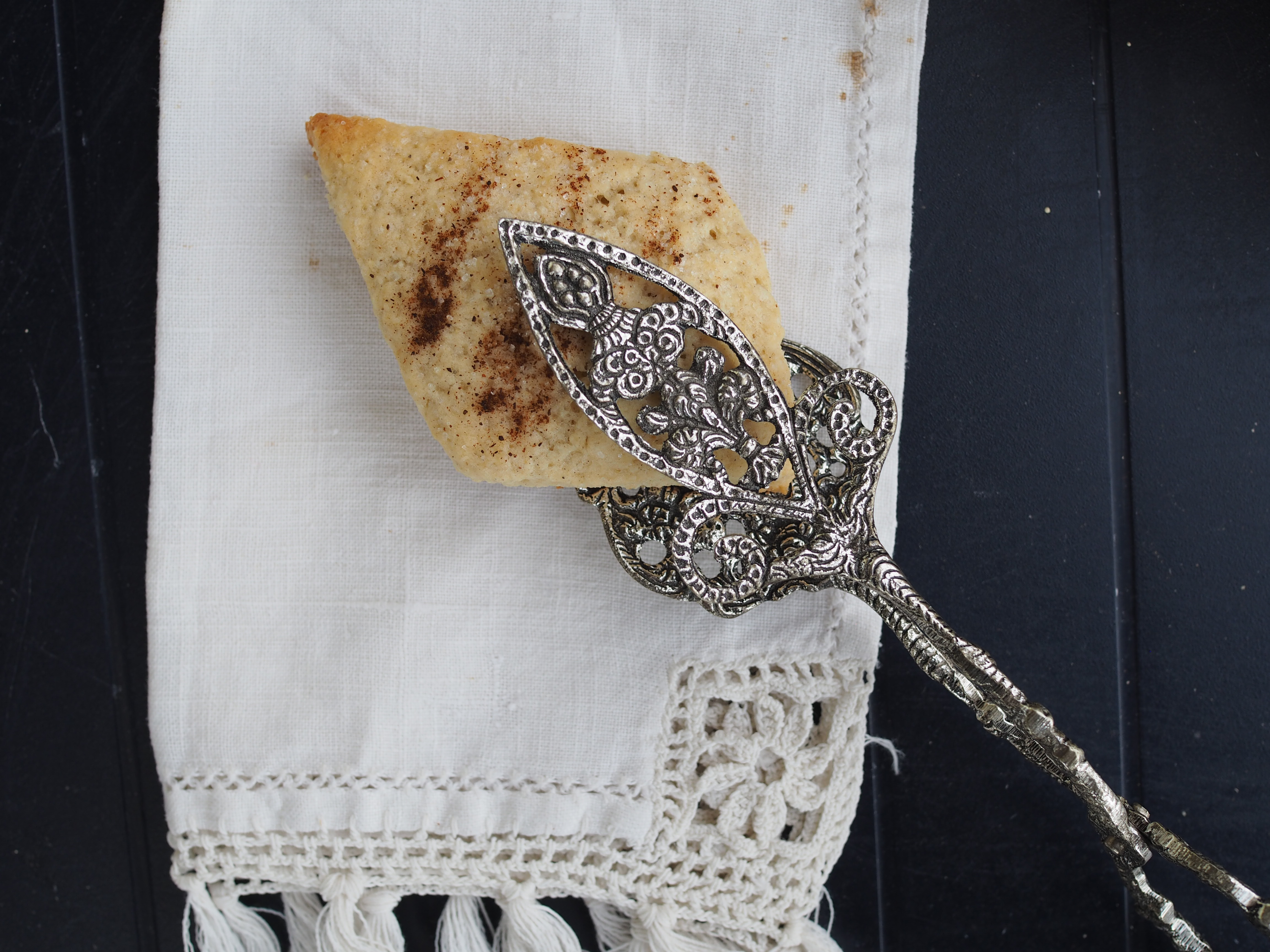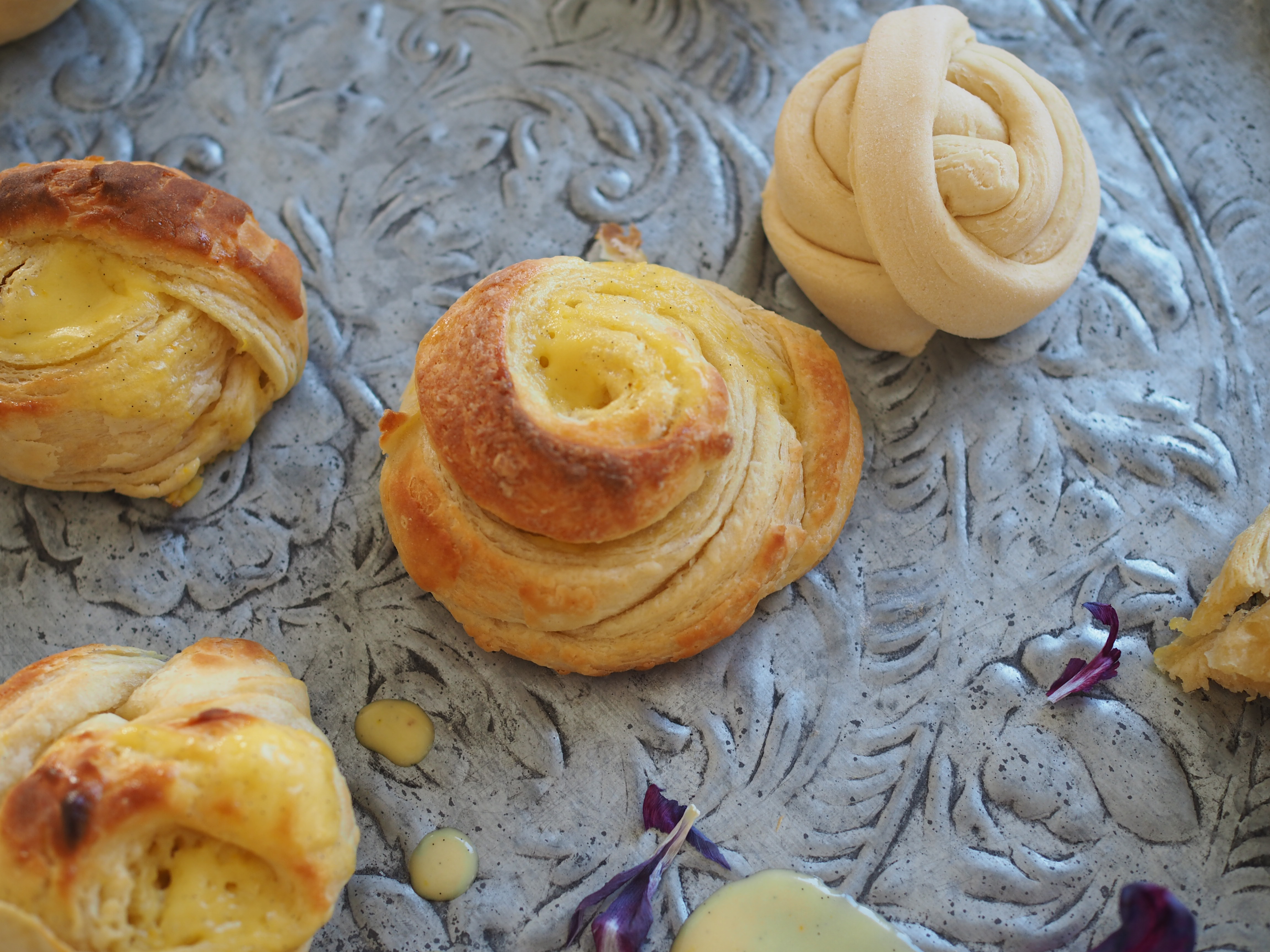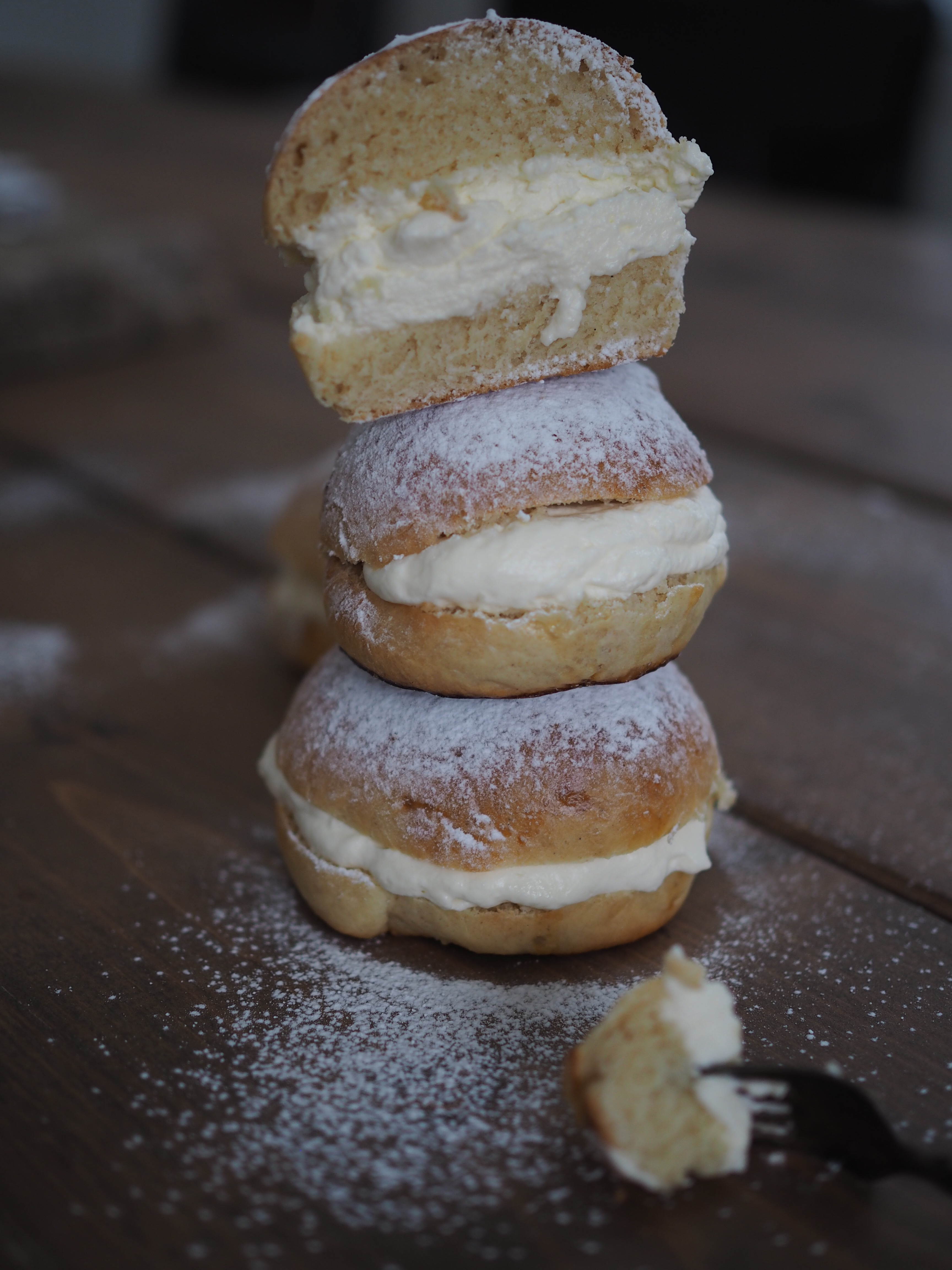 The smell of melting butter amidst flaky dough fills the room. A slight hint of orange and vanilla. As I wait for the minutes to pass, I cozy up to my chair and read more about the famous pastry known in Norway as wienerbrød, or translated to viennese and commonly referred to as danish in English. The aroma is well-known across bakeries in Norway and the rest of Scandinavia. It’s a pastry that was indeed created from bakers in Denmark, but not solely by their own efforts. It was a result of inspiration and the borrowing of techniques, like most recipes today. By standing on the shoulders of others, they were able to create a new, inspired pastry.
The smell of melting butter amidst flaky dough fills the room. A slight hint of orange and vanilla. As I wait for the minutes to pass, I cozy up to my chair and read more about the famous pastry known in Norway as wienerbrød, or translated to viennese and commonly referred to as danish in English. The aroma is well-known across bakeries in Norway and the rest of Scandinavia. It’s a pastry that was indeed created from bakers in Denmark, but not solely by their own efforts. It was a result of inspiration and the borrowing of techniques, like most recipes today. By standing on the shoulders of others, they were able to create a new, inspired pastry.
It is said that during the 1850s, a strike broke out amongst bakers in Copenhagen. This forced bakery owners to seek help from bakers in Vienna. The help was given, as it was usual for a baker master’s son to take up an apprenticeship in Vienna, the baking capital, and therefore they had good relations. The bakers from Vienna had a long tradition of lamination, where dough is layered with fat and rolled out several times. The Danish bakers were inspired and they began to develop the techniques, adjust to own their tastes and increase the amount of rich butter. The fillings and shapes were only left to the imagination and the creation of the Danish pastry or ‘Viennese Bread’ was born.


I came across an article about the historic town of Nusfjord, situated on Flakstadøya in Lofoten. The bakery, which no longer is in use, was built prior to 1877. It produced breads and pastries to both fishermen and locals. When fishermen would come from the fisheries to supply fish, they often had to take upon debt for shelter, food and tools as they could not pay in cash. The second squire of Nusfjord, known as ‘Old Bernhard’ would hang out a little bag filled with wienerbrød to every fishing crew as a small reward for their work, despite the debts. (Source)
I like to think that, sometimes, it’s just the simple, kind gestures, like hanging bags of wienerbrød for the taking, are what brings us closer as a community. Filling the belly. Satisfying a need. Doing the unexpected. Showing kindness. Those are the measures which create good relations. And so, perhaps when we bake, we should consider to double the amount. A great excuse for taking a moment to sit down, converse and share something sweet and special. (more…)
 A Norwegian breakfast and lunch is never complete without a slice of bread or a type of knekkebrød. These ‘crisp breads’ or ‘breaking breads’ which are flat and dry, resembling a cracker, probably originated in Scandinavia close to 500 years ago. Some sources say that crisp bread was a staple of the Vikings as they could store them for long periods of time. These crisp breads would have been baked on hot stones, while today’s knekkebrød is baked in the oven. Baking them in the oven is what makes these crisp breads so different from the Norwegian flatbrød, which is baked on a flat griddle, much like lefse.
A Norwegian breakfast and lunch is never complete without a slice of bread or a type of knekkebrød. These ‘crisp breads’ or ‘breaking breads’ which are flat and dry, resembling a cracker, probably originated in Scandinavia close to 500 years ago. Some sources say that crisp bread was a staple of the Vikings as they could store them for long periods of time. These crisp breads would have been baked on hot stones, while today’s knekkebrød is baked in the oven. Baking them in the oven is what makes these crisp breads so different from the Norwegian flatbrød, which is baked on a flat griddle, much like lefse.



 The roosters and hens have given a whole new meaning to the term ‘free range’ these days. Making their rounds, they circle up into the woods and around the kitchen garden just before sunbathing and slumbering below my kitchen window. They continue on following a makeshift pathway down a small slope to the main lawn and heading back to their coop for another siesta. They make this journey a couple of times a day and the roosters crow every once in awhile as if to give me some sort of sense that their journey under the sun is going well. Very well.
The roosters and hens have given a whole new meaning to the term ‘free range’ these days. Making their rounds, they circle up into the woods and around the kitchen garden just before sunbathing and slumbering below my kitchen window. They continue on following a makeshift pathway down a small slope to the main lawn and heading back to their coop for another siesta. They make this journey a couple of times a day and the roosters crow every once in awhile as if to give me some sort of sense that their journey under the sun is going well. Very well.


 My sister recently collated and copied my Great Grandmother’s recipes as gifts for the whole family. Reading through the recipes brought back so many wonderful memories. Her cookies were always a highlight of our holiday traditions. Cookies that, today, seem classical and perhaps a bit vintage. Something our grandmother grew up with and baked for us in our childhood, but we rarely, if ever, bake in our own kitchens.
My sister recently collated and copied my Great Grandmother’s recipes as gifts for the whole family. Reading through the recipes brought back so many wonderful memories. Her cookies were always a highlight of our holiday traditions. Cookies that, today, seem classical and perhaps a bit vintage. Something our grandmother grew up with and baked for us in our childhood, but we rarely, if ever, bake in our own kitchens.

 The smell of melting butter amidst flaky dough fills the room. A slight hint of orange and vanilla. As I wait for the minutes to pass, I cozy up to my chair and read more about the famous pastry known in Norway as wienerbrød, or translated to viennese and commonly referred to as danish in English. The aroma is well-known across bakeries in Norway and the rest of Scandinavia. It’s a pastry that was indeed created from bakers in Denmark, but not solely by their own efforts. It was a result of inspiration and the borrowing of techniques, like most recipes today. By standing on the shoulders of others, they were able to create a new, inspired pastry.
The smell of melting butter amidst flaky dough fills the room. A slight hint of orange and vanilla. As I wait for the minutes to pass, I cozy up to my chair and read more about the famous pastry known in Norway as wienerbrød, or translated to viennese and commonly referred to as danish in English. The aroma is well-known across bakeries in Norway and the rest of Scandinavia. It’s a pastry that was indeed created from bakers in Denmark, but not solely by their own efforts. It was a result of inspiration and the borrowing of techniques, like most recipes today. By standing on the shoulders of others, they were able to create a new, inspired pastry.


 Serving lamb, for instance, is not an old tradition. For the long, dark Norwegian winters delay the gestation period for sheep, meaning lambs are not large enough to be ready by Easter. The lamb is either imported or from last year’s yield. Nonetheless, lamb is important to the table today. Often served on the bone, it is roasted with simple herbs and seasonings.
Serving lamb, for instance, is not an old tradition. For the long, dark Norwegian winters delay the gestation period for sheep, meaning lambs are not large enough to be ready by Easter. The lamb is either imported or from last year’s yield. Nonetheless, lamb is important to the table today. Often served on the bone, it is roasted with simple herbs and seasonings.

 The concept of awakening later turned into an old tradition of waking early from bed and grabbing birch branches to then playfully spank those who were not yet awake. It was normal, up until far into the late 1900s, for children to whip their parents for fun and to be treated to a cream-filled bun afterwards. These buns are still eaten on Sunday.
The concept of awakening later turned into an old tradition of waking early from bed and grabbing birch branches to then playfully spank those who were not yet awake. It was normal, up until far into the late 1900s, for children to whip their parents for fun and to be treated to a cream-filled bun afterwards. These buns are still eaten on Sunday.
